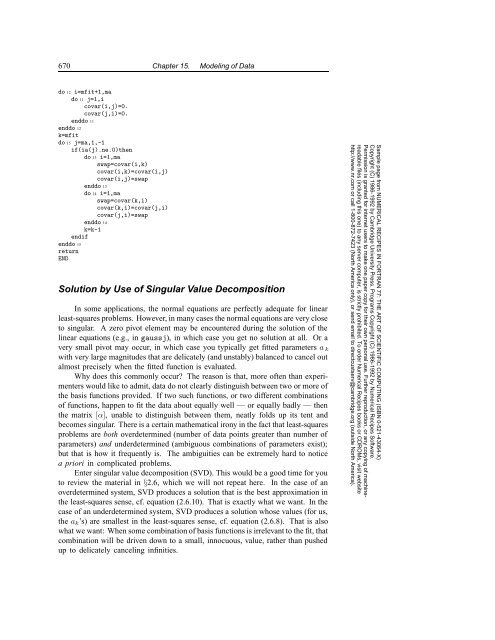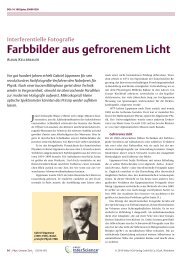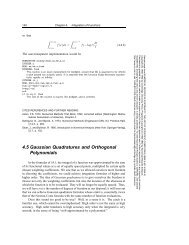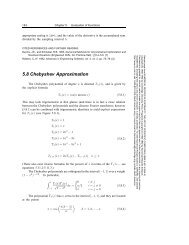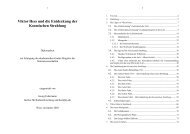15.4 General Linear Least Squares
15.4 General Linear Least Squares
15.4 General Linear Least Squares
Create successful ePaper yourself
Turn your PDF publications into a flip-book with our unique Google optimized e-Paper software.
670 Chapter 15. Modeling of Data<br />
do 12 i=mfit+1,ma<br />
do 11 j=1,i<br />
covar(i,j)=0.<br />
covar(j,i)=0.<br />
enddo 11<br />
enddo 12<br />
k=mfit<br />
do 15 j=ma,1,-1<br />
if(ia(j).ne.0)then<br />
do 13 i=1,ma<br />
swap=covar(i,k)<br />
covar(i,k)=covar(i,j)<br />
covar(i,j)=swap<br />
enddo 13<br />
do 14 i=1,ma<br />
swap=covar(k,i)<br />
covar(k,i)=covar(j,i)<br />
covar(j,i)=swap<br />
enddo 14<br />
k=k-1<br />
endif<br />
enddo 15<br />
return<br />
END<br />
Solution by Use of Singular Value Decomposition<br />
In some applications, the normal equations are perfectly adequate for linear<br />
least-squares problems. However, in many cases the normal equations are very close<br />
to singular. A zero pivot element may be encountered during the solution of the<br />
linear equations (e.g., in gaussj), in which case you get no solution at all. Or a<br />
very small pivot may occur, in which case you typically get fitted parameters a k<br />
with very large magnitudes that are delicately (and unstably) balanced to cancel out<br />
almost precisely when the fitted function is evaluated.<br />
Why does this commonly occur? The reason is that, more often than experimenters<br />
would like to admit, data do not clearly distinguish between two or more of<br />
the basis functions provided. If two such functions, or two different combinations<br />
of functions, happen to fit the data about equally well — or equally badly — then<br />
the matrix [α], unable to distinguish between them, neatly folds up its tent and<br />
becomes singular. There is a certain mathematical irony in the fact that least-squares<br />
problems are both overdetermined (number of data points greater than number of<br />
parameters) and underdetermined (ambiguous combinations of parameters exist);<br />
but that is how it frequently is. The ambiguities can be extremely hard to notice<br />
a priori in complicated problems.<br />
Enter singular value decomposition (SVD). This would be a good time for you<br />
to review the material in §2.6, which we will not repeat here. In the case of an<br />
overdetermined system, SVD produces a solution that is the best approximation in<br />
the least-squares sense, cf. equation (2.6.10). That is exactly what we want. In the<br />
case of an underdetermined system, SVD produces a solution whose values (for us,<br />
the ak’s) are smallest in the least-squares sense, cf. equation (2.6.8). That is also<br />
what we want: When some combination of basis functions is irrelevant to the fit, that<br />
combination will be driven down to a small, innocuous, value, rather than pushed<br />
up to delicately canceling infinities.<br />
Sample page from NUMERICAL RECIPES IN FORTRAN 77: THE ART OF SCIENTIFIC COMPUTING (ISBN 0-521-43064-X)<br />
Copyright (C) 1986-1992 by Cambridge University Press. Programs Copyright (C) 1986-1992 by Numerical Recipes Software.<br />
Permission is granted for internet users to make one paper copy for their own personal use. Further reproduction, or any copying of machinereadable<br />
files (including this one) to any server computer, is strictly prohibited. To order Numerical Recipes books or CDROMs, visit website<br />
http://www.nr.com or call 1-800-872-7423 (North America only), or send email to directcustserv@cambridge.org (outside North America).


